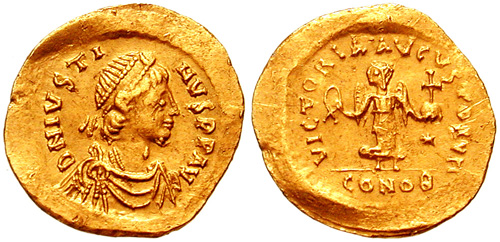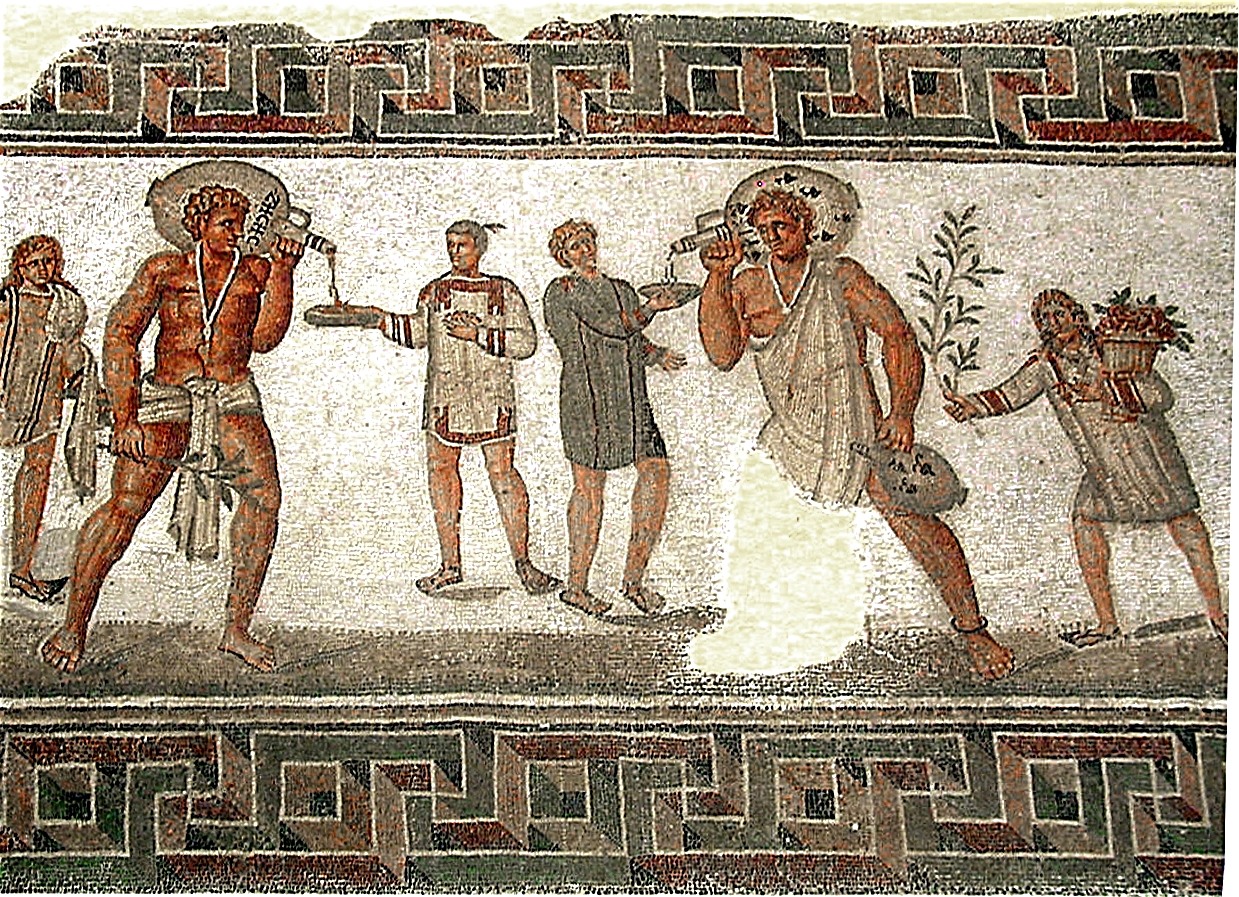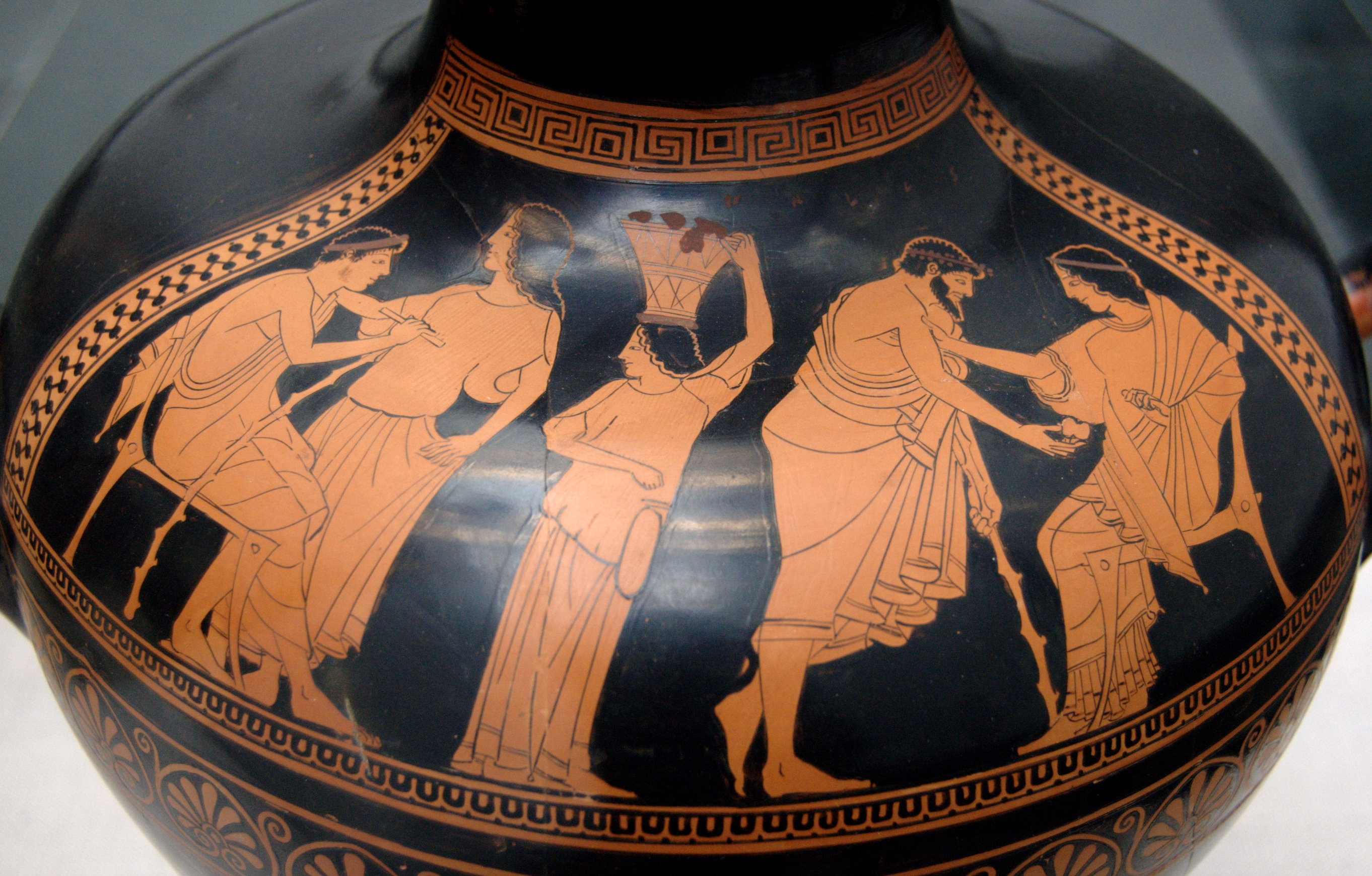|
Comito
Comito ( el, died ''after'' 528 AD) was a Byzantine stage performer, the daughter of Acacius "the bear-keeper", an elder sister to Theodora and Anastasia. Through Theodora, Comito was a sister-in-law of Justinian I. The Secret History of Procopius is a main source about her. Comito is also mentioned by John Malalas, Theophanes the Confessor and Georgios KedrenosMartindale, Jones & Morris (1992), pp. 329 Life Her father, Acacius, was a bear trainer of the hippodrome's Green faction in Constantinople. Her mother, whose name is not recorded, was a dancer and an actress. After her father's death, her mother brought her children wearing garlands into the hippodrome and presented them as suppliants to the crowd. Most of the information from this earliest part of her life comes from the ''Secret History'' of Procopius, published posthumously. Critics of Procopius (whose work reveals a man seriously disillusioned with his rulers) have dismissed his work as a severely biased source, vitr ... [...More Info...] [...Related Items...] OR: [Wikipedia] [Google] [Baidu] |
Sophia (empress)
Aelia Sophia (Medieval Greek: Σοφία) (c. 530 – c./aft. 601) was the Byzantine empress as the wife of Emperor Justin II. She was also ruler in her capacity as regent during the incapacity of her spouse from 573 until 578, though she was never a monarch. She was interested in economic and financial matters during Justin's reign. Early life According to the ''Ecclesiastic History'' of John of Ephesus, Sophia was a niece of Theodora, the Empress consort of Justinian I. John of Ephesus did not specify the identities of her parents. According to the Secret History of Procopius, Theodora had only two siblings: her older sister Comito and younger sister Anastasia; either one could be the mother of Sophia. Procopius identifies Comito as a leading hetaera of her age. John Malalas records that Comito (b. ca 500) married general Sittas in 528. PLRE, vol. 3, ''Sittas'' Sittas may thus be the father of Sophia. Whether Anastasia ever married is unknown. During the reign of Justinian I ... [...More Info...] [...Related Items...] OR: [Wikipedia] [Google] [Baidu] |
Theodora (6th Century)
Theodora (; Greek: Θεοδώρα; 50028 June 548), sometimes enumerated as Theodora I, was Byzantine empress by marriage to emperor Justinian. She became empress upon Justinian's accession in 527 and had commanding or considerable influence over him; she was his most trusted adviser in directing all things pertaining to the empire and the terms of appointing and dismissing anyone in the empire. As empress, she had deep influence on the religious values of the time and played a key role in reforming the treatment and status of women within the Byzantine Empire. Along with her spouse, Theodora is a saint in the Eastern Orthodox Church and in the Oriental Orthodox Church, commemorated on 14 November and 28 June respectively. Certain researchers have opined that she was the most powerful and influential woman in Byzantine history. Historiography The main historical sources for her life are the works of her contemporary Procopius. Procopius was a member of the staff of Belisarius, ... [...More Info...] [...Related Items...] OR: [Wikipedia] [Google] [Baidu] |
Justinian Dynasty
The Byzantine Empire had its first golden age under the Justinian dynasty, which began in 518 AD with the accession of Justin I. Under the Justinian dynasty, particularly the reign of Justinian I, the empire reached its greatest territorial extent since the fall of its Western counterpart, reincorporating North Africa, southern Illyria, southern Spain, and Italy into the empire. The Justinian dynasty ended in 602 with the deposition of Maurice and the ascension of his successor, Phocas. Justin I Early life and accession to the throne The Justinian dynasty began with the accession of its namesake Justin I to the throne. Justin I was born in a big village, Bederiana, in the 450s CE. Like many country youths, he went to Constantinople and enlisted in the army, where, due to his physical abilities, he became a part of the Excubitors, the palace guards. He fought in the Isaurian and Persian wars, and rose through the ranks to become the commander of the Excubitors, wh ... [...More Info...] [...Related Items...] OR: [Wikipedia] [Google] [Baidu] |
Sittas
Sittas ( el, Σίττας; died 538) was a Byzantine military commander during the reign of Emperor Justinian I (r. 527–565). During the Iberian War against the Sassanid Empire, Sittas was given command of forces in Armenia, similar to the status of Belisarius in Mesopotamia. He won a victory over the Sassanids at the battle of Satala. Biography Sittas was the husband of Comito, the elder sister of the Empress Theodora, and possible father of the later empress Sophia.. Sittas's origin is obscure. Byzantinists have suggested his name was Gothic or Thracian, but his theoretical descent from either the Goths or the Thracians is not mentioned in primary sources. He enters history in the reign of Emperor Justin I (r. 518–527) as a ''doryphoros'' ("bodyguard") in the guard of Justinian, then '' magister militum per Orientem''. In 527, Sittas and Belisarius were given command of an invasion of Persarmenia. They were successful in looting the area and capturing a significan ... [...More Info...] [...Related Items...] OR: [Wikipedia] [Google] [Baidu] |
Animal Training
Animal training is the act of teaching animals specific responses to specific conditions or stimuli. Training may be for purposes such as companionship, detection, protection, and entertainment. The type of training an animal receives will vary depending on the training method used, and the purpose for training the animal. For example, a seeing eye dog will be trained to achieve a different goal than a wild animal in a circus. In some countries animal trainer certification bodies exist. They do not share consistent goals or requirements; they do not prevent someone from practicing as an animal trainer nor using the title. Similarly, the United States does not require animal trainers to have any specific certification. An animal trainer should consider the natural behaviors of the animal and aim to modify behaviors through a basic system of reward and punishment. Methods The behavioral approach Principles During training, an animal trainer can administer one of four po ... [...More Info...] [...Related Items...] OR: [Wikipedia] [Google] [Baidu] |
6th-century Byzantine Women
The 6th century is the period from 501 through 600 in line with the Julian calendar. In the West, the century marks the end of Classical Antiquity and the beginning of the Middle Ages. The collapse of the Western Roman Empire late in the previous century left Europe fractured into many small Germanic kingdoms competing fiercely for land and wealth. From the upheaval the Franks rose to prominence and carved out a sizeable domain covering much of modern France and Germany. Meanwhile, the surviving Eastern Roman Empire began to expand under Emperor Justinian, who recaptured North Africa from the Vandals and attempted fully to recover Italy as well, in the hope of reinstating Roman control over the lands once ruled by the Western Roman Empire. In its second Golden Age, the Sassanid Empire reached the peak of its power under Khosrau I in the 6th century.Roberts, J: "History of the World.". Penguin, 1994. The classical Gupta Empire of Northern India, largely overrun by the Huna, ended ... [...More Info...] [...Related Items...] OR: [Wikipedia] [Google] [Baidu] |
6th-century Byzantine People
The 6th century is the period from 501 through 600 in line with the Julian calendar. In the West, the century marks the end of Classical Antiquity and the beginning of the Middle Ages. The collapse of the Western Roman Empire late in the previous century left Europe fractured into many small Germanic kingdoms competing fiercely for land and wealth. From the upheaval the Franks rose to prominence and carved out a sizeable domain covering much of modern France and Germany. Meanwhile, the surviving Eastern Roman Empire began to expand under Emperor Justinian, who recaptured North Africa from the Vandals and attempted fully to recover Italy as well, in the hope of reinstating Roman control over the lands once ruled by the Western Roman Empire. In its second Golden Age, the Sassanid Empire reached the peak of its power under Khosrau I in the 6th century.Roberts, J: "History of the World.". Penguin, 1994. The classical Gupta Empire of Northern India, largely overrun by the ... [...More Info...] [...Related Items...] OR: [Wikipedia] [Google] [Baidu] |
Slavery In Ancient Rome
Slavery in ancient Rome played an important role in society and the economy. Besides manual labour, slaves performed many domestic services and might be employed at highly skilled jobs and professions. Accountants and physicians were often slaves. Slaves of Greek origin in particular might be highly educated. Unskilled slaves, or those sentenced to slavery as punishment, worked on farms, in mines, and at mills. Slaves were considered property under Roman law and had no legal personhood. Most slaves would never be freed. Unlike Roman citizens, they could be subjected to corporal punishment, sexual exploitation ( prostitutes were often slaves), torture and summary execution. Over time, however, slaves gained increased legal protection, including the right to file complaints against their masters. One major source of slaves had been Roman military expansion during the Republic. The use of former enemy soldiers as slaves led perhaps inevitably to a series of ''en masse'' armed rebe ... [...More Info...] [...Related Items...] OR: [Wikipedia] [Google] [Baidu] |
Tunic
A tunic is a garment for the body, usually simple in style, reaching from the shoulders to a length somewhere between the hips and the knees. The name derives from the Latin ''tunica'', the basic garment worn by both men and women in Ancient Rome, which in turn was based on earlier Greek garments that covered wearers' waists. Ancient era Indian tunic Indus valley civilization figurines depict both women and men wearing a tunic-like garment. A terracotta model called Lady of the spiked throne depicts two standing turban-wearing men wearing what appears to be a conical gown marked by a dense series of thin vertical incisions that might suggest stiffened cloth. A similar gold disc in the al-Sabah Collection from the Kuwait National Museum appears to be from the Indus Valley civilization depicts similar conical tunic-wearing men holding two bulls by their tails under a pipal tree shown in an Indus-like mirror symmetry. A mother goddess figurine from the National Museum new D ... [...More Info...] [...Related Items...] OR: [Wikipedia] [Google] [Baidu] |
Hetaera
Hetaira (plural hetairai (), also hetaera (plural hetaerae ), ( grc, ἑταίρα, "companion", pl. , la, hetaera, pl. ) was a type of prostitute in ancient Greece, who served as an artist, entertainer and conversationalist in addition to providing sexual service. Unlike the rule for ancient Greek women, hetairas would be highly educated and were allowed in the symposium. Summary Traditionally, historians of ancient Greece have distinguished between ''hetairai'' and '' pornai'', another class of prostitute in ancient Greece. In contrast to pornai, who provided sex for numerous clients in brothels or on the street, hetairai were thought to have had only a few men as clients at any one time, to have had long-term relationships with them, and to have provided companionship and intellectual stimulation as well as sex. For instance, Charles Seltman wrote in 1953 that "hetaeras were certainly in a very different class, often highly educated women". More recently, however, histor ... [...More Info...] [...Related Items...] OR: [Wikipedia] [Google] [Baidu] |
Laurel Wreath
A laurel wreath is a round wreath made of connected branches and leaves of the bay laurel (), an aromatic broadleaf evergreen, or later from spineless butcher's broom ('' Ruscus hypoglossum'') or cherry laurel ('' Prunus laurocerasus''). It is a symbol of triumph and is worn as a chaplet around the head, or as a garland around the neck. The symbol of the laurel wreath traces back to Ancient Greece. In Greek mythology, the god Apollo, who is patron of lyrical poetry, musical performance and skill-based athletics, is conventionally depicted wearing a laurel wreath on his head in all three roles. Wreaths were awarded to victors in athletic competitions, including the ancient Olympics; for victors in athletics they were made of wild olive tree known as ''" kotinos"'' (), (sc. at Olympia) – and the same for winners of musical and poetic competitions. In Rome they were symbols of martial victory, crowning a successful commander during his triumph. Whereas ancient laurel wr ... [...More Info...] [...Related Items...] OR: [Wikipedia] [Google] [Baidu] |
Entr'acte
(or ', ;Since 1932–35 the French Academy recommends this spelling, with no apostrophe, so historical, ceremonial and traditional uses (such as the 1924 René Clair film title) are still spelled ''Entr'acte''. German: ' and ', Italian: ''intermezzo'', Spanish: ') means "between the acts". It can mean a pause between two parts of a stage production, synonymous to an intermission (this is nowadays the more common meaning in French), but it more often (in English) indicates a piece of music performed between acts of a theatrical production. In the case of stage musicals, the ''entr'acte'' serves as the overture of act 2 (and sometimes acts 3 and 4, as in '' Carmen''). In films that were meant to be shown with an intermission, there was frequently a specially recorded ''entr'acte'' on the soundtrack between the first and second half of the film, although this practice eventually died out. Origin Originally ''entr'actes'' resulted from stage curtains being closed for set or cos ... [...More Info...] [...Related Items...] OR: [Wikipedia] [Google] [Baidu] |
.jpg)







